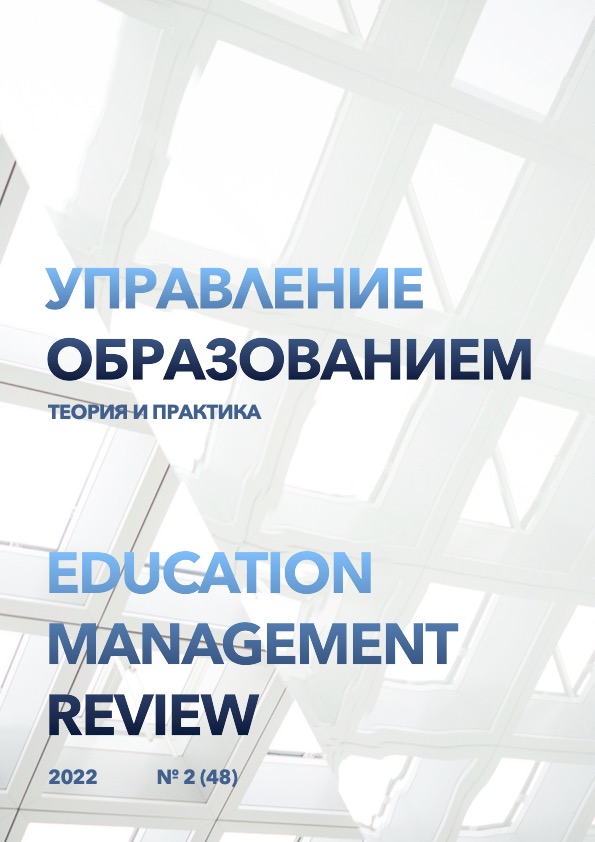Elements of general professional training at the university within the framework of a non-linear information and educational environment
DOI:
https://doi.org/10.25726/z6739-3385-1202-qKeywords:
nonlinear educational environment, university, general professional trainingAbstract
The priority direction of training students of a higher educational institution (university) remains the introduction of the educational and information environment (OIS, or in other terminology, the information and educational environment of the IOS) into the educational process. The indisputable advantages of the OIS are to facilitate the understanding and assimilation of knowledge, the possibility of visualizing information, automating the processes of computing activity, creating conditions for independent work of students. The introduction of OIS is hindered by the weak development of didactic foundations and the lack of scientifically sound practical recommendations for their application in higher technical educational institutions. The pace of development of information technologies is outpacing the processes of psychological and pedagogical understanding of the consequences of their introduction, and the reorganization of traditional forms of education based on information and communication technologies (ICT) encounters the lack of teachers' readiness for this and the corresponding skills. The potential for increasing the effectiveness of the educational process in practice is not fully realized. In general, the learning process by means of the information and educational environment is gradually shifting from web-based learning to mobile, and from mobile to contextual learning. This requires the search for new approaches for the organization of training in the OIC and the construction of an individual trajectory of the student in it. The authors of the article propose such a new approach within the framework of general professional training of students at the university - the implementation of a nonlinear information and educational system.
References
Андреева А.А. Информационно-образовательная среда университета // Международный научно-исследовательский журнал. 2019. № 11 (77). Ч. 1. С. 34-37.
Гущина О.М., Крайнова О.А. Выбор и оценка эффективности средств разработки электронных образовательных ресурсов // Информатика и образование. 2013. № 1. С. 7-12.
Концепция совершенствования (модернизации) единой информационной образовательной среды, обеспечивающей реализацию национальных стратегий развития Российской Федерации // Педагогика. 2018. № 4. С. 98-125.
Мельникова Е.В. Образовательная информационная среда университета как средство развития информационной компетентности студента // Вестник Ивановского государственного университета. Серия: Естественные, общественные науки. 2016. № 1. С. 44-48.
Учебный русско-латинский словарь юридических терминов и крылатых выражений. – Ставрополь: Центр научного знания "Логос", 2019. 310 с.
Шапран Ю.П., Шапран О.И. Образовательная среда вуза: типология, функции, структура// Молодой ученый. 2015. № 7. С. 881-885.
Bartosh D.K. Modern educational trends in multimedia teaching of foreign languages //University Herald. 2011. Pp. 12-14.
Gural S.K., Krasnopeeva Т.О., Smokotin V.M., Sorokoumova S.N. Goals, Tasks, Principles And Content Of Individual Foreign Language Educational Trajectories Based On The Latent Characteristics Of The Students // Language And Culture. 2019. Vol. 47. Pp. 179-196.
Gural, S.K., Obdalova, O.A., Conceptual Basis for Developing an Educational Environment for Teaching Intercultural Communication, Language and Culture. 2012. № 4 (20). Pp. 83-96.
Krasnopeeva T & Gromov M. Analysis of Statistical Methods on Plurilinguistic Quantitative Data// IOP Conf. Series: Journal of Physics (2020).
Kuklina S.S., Shevchenko A.I. How to Make Professionally Oriented Educational Environment of Intercultural and Professionally Oriented Character // Lecture Notes in Networks and Systems, 2020. Volume 131. Pp. 71-81
Kuklina S.S., Shevchenko A.I. The formation of intercultural competence in a professionally oriented information educational environment of the university // Language and Culture. 2019.№ 47. Pp. 197- 216.
Makhmutov M.I. The principle of professional orientation of training // Principles of education in modern pedagogical theory and practice. Chelyabinsk: CNC, 2015. 211 p.
Shevchenko A.I. The formation of intercultural competence in a professionally oriented information educational environment among students of a non-linguistic university: dis. ... cand. ped sciences / A.I. Shevchenko - N.Novgorod, 2019 . 176 p.
Stanley G. Language Learning with Technology: Ideas for Integrating Technology in the Classroom. Cambridge: Cambridge Handbooks for Language Teachers, 2013. 264 p.
Sysoev P.V. The system of teaching a foreign language on individual trajectories based on modern information and communication technologies // Foreign languages at school. 2014. Vol. 5. Pp. 2-11.




